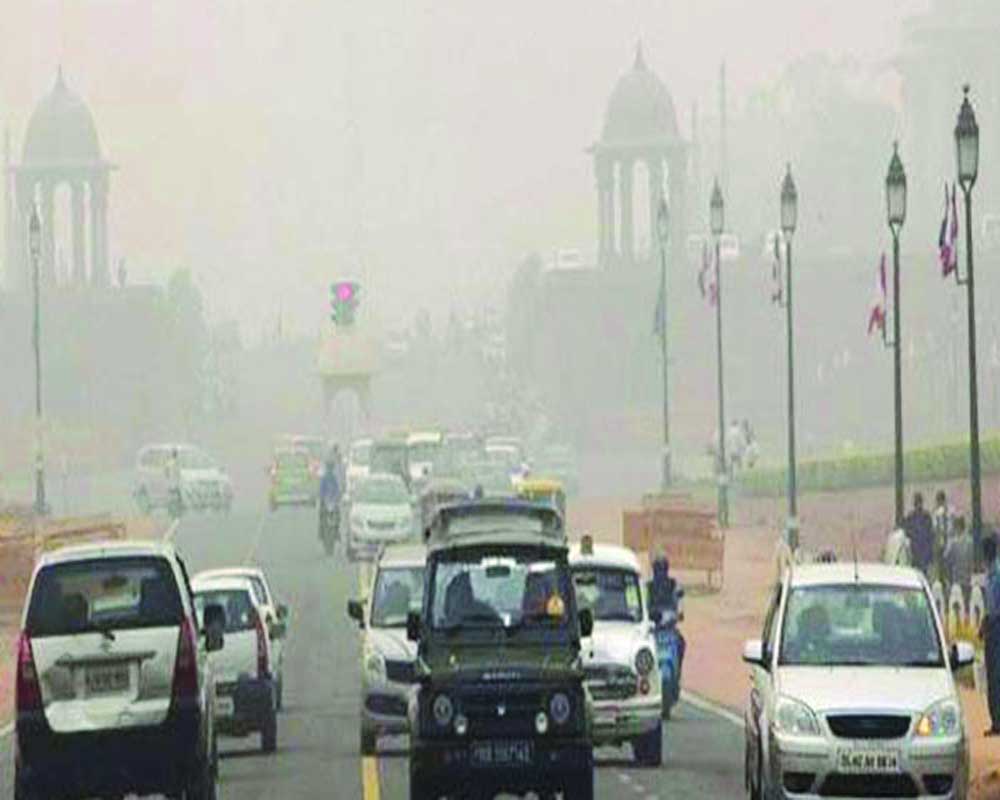In the absence of a cohesive collaboration strategy with neighbouring States, the Graded Response Action Plan might end up being just another knee-jerk reaction to the pollution onslaught in winters
The fast-approaching winter months have now become synonymous with a worsening air quality in the Delhi-National Capital Region (NCR). The pollution reaches unmanageable levels, largely due to the smoke emanating from crop residue burning in the neighbouring States of Punjab, Haryana and Uttar Pradesh (UP), blowing over to Delhi-NCR.
Incidents of stubble burning have already begun increasing in Punjab and Haryana and are likely to peak in the next 10-12 days as the harvest season picks up in Sangrur, Patiala, Ludhiana and Fatehabad districts. Here, the tradition of open field burning is rampant and continues unabated in spite of the activity being deemed illegal. According to a report by the Centre-run System of Air Quality and Weather Forecasting and Research (SAFAR), this biomass burning is likely to add nine per cent to Delhi’s PM 2.5 concentration.
In spite of all this, enforcement of the law pertaining to crop burning in Punjab has been lax, to say the least. This toxic mix of smoke and vehicular pollution has resulted in Delhi-NCR’s Air Quality Index (AQI) plummeting to alarming levels. However, all is not lost as a bevy of efforts undertaken by the Government and authorities concerned has had a positive impact on an otherwise grim scenario.
First, awareness regarding the quality of the air we breathe in through regular publicity of the AQI has made people conscious. Second, the introduction of the much-cleaner BS-VI fuel ahead of schedule has also instilled confidence among the citizens. Furthermore, the closure of coal-based power plants and fall in the sales of diesel vehicles have helped salvage the situation in Delhi and the situation now is much better than what it was five years ago.
But clearly much more needs to be done. Probably, keeping this in mind, the Delhi Government has introduced the Graded Response Action Plan (GRAP) early this year to handle pollution in an incremental manner, depending on the level of severity, especially in the winters.
GRAP came into force from October 14 with the objective to curb air pollution in Delhi-NCR, by proactively rolling out measures like discouraging private vehicles on the city’s roads, stopping trucks from outside, using diesel generators, closing brick kilns and stone crushing units. It seemed a timely step as on October 13, the AQI was “very poor” with the level going beyond the 300-mark. On October 14, the AQI improved by around 50 points but the situation has continued to oscillate between “poor” and “very poor” over the last few days.
Even though experts have hailed GRAP for the gradual reduction in pollution levels over the years and for fixing accountability — as it clearly marks the agency responsible for each action to be taken — the efficacy of the plan is yet to be proven.
This is because many of the pollution-triggering factors are beyond the purview of the Arvind Kejriwal administration and the Delhi Government needs active cooperation and collaboration of the State Governments of UP, Haryana and Punjab. In the absence of a cohesive collaboration strategy, the GRAP might just end up being a knee-jerk reaction to the pollution onslaught.
The gaps in the fight against pollution are becoming visible with generators being used in Gurugram with impunity due to the exceptional power cuts the city faces. Similarly, many questions were raised on the GRAP’s efficacy in January 2019.
This is because toxic levels of air pollution monitored over Delhi almost every week, from November 1, 2018 to January 6 this year, showed that the Government’s emergency plans to tackle the city’s annual crisis had failed, according to a report of the United Residents’ Joint Action (URJA), a collective of the city’s resident welfare associations.
The report summarised the findings of 45 Right to Information (RTI) applications filed at 14 Government departments. Responses were sought from Central, State and municipal bodies to assess the effectiveness of GRAP. The analysis of data collected by URJA for 68 days showed that except for one day in Central Delhi’s ITO, the national Capital’s air quality was continually above permissible limits.
The GRAP initiative for this year cannot be allowed to be a rerun of last year. The Government must undertake necessary steps to overcome possibilities of failure and achieve the objective of curbing pollution levels effectively.
(The writer is an environmental journalist)


























